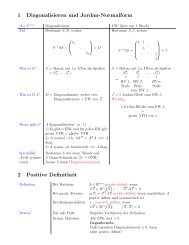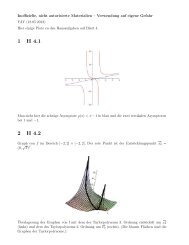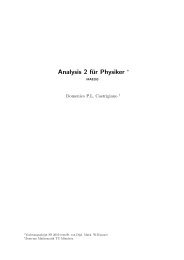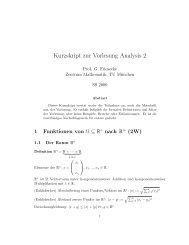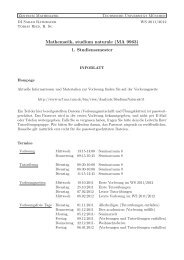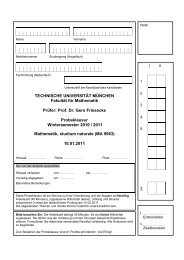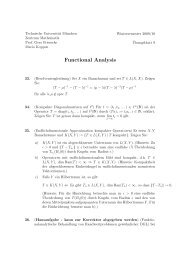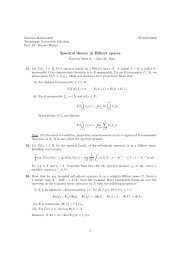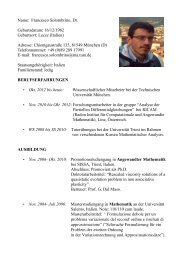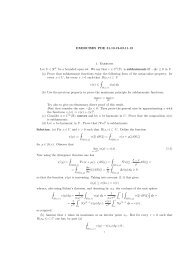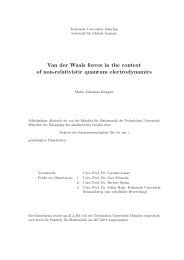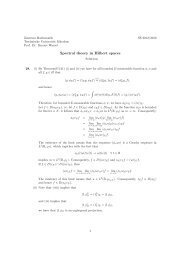EXERCISES PDE 23-25.01.13 1. Exercise Fourier analysis in ...
EXERCISES PDE 23-25.01.13 1. Exercise Fourier analysis in ...
EXERCISES PDE 23-25.01.13 1. Exercise Fourier analysis in ...
You also want an ePaper? Increase the reach of your titles
YUMPU automatically turns print PDFs into web optimized ePapers that Google loves.
4 EX11Now, let C be given by (3.1), and let C T the cont<strong>in</strong>uity constant of the trace operator. Assumethat λ > C T (1 + C 2 ). Then for every u ∈ HΓ 1 D(Ω) one has, by the cont<strong>in</strong>uity of the trace and by(3.1), thatB λ (u, u) = ‖∇u‖ 2 L 2 (Ω) − 1 λ ‖T u‖2 L 2 (∂Ω) ≥ 11 + C 2 ‖u‖2 H 1 (Ω) − C Tλ ‖u‖2 H 1 (Ω) = c 0‖u‖ 2 H 1 (Ω)with c 0 := 11+C− C 2 Tλ> 0 due to the assumption on λ. Therefore for λ > C T (1 + C 2 ) the bil<strong>in</strong>earform B λ is coercive on HΓ 1 D(Ω). For any λ > 0 one has also by the Cauchy-Schwarz <strong>in</strong>equality andthe cont<strong>in</strong>uity of the trace operator thatB λ (u, v) ≤ (1 + C Tλ )‖u‖ H 1 (Ω)‖v‖ H 1 (Ω)so that B λ is cont<strong>in</strong>uous. The conclusion follows by the Lax-Milgram theorem.□



